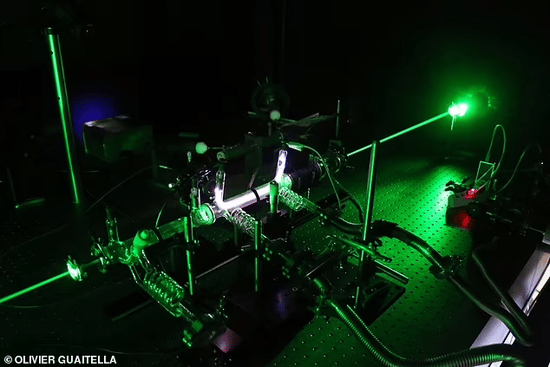The grand goal of human landing on Mars is exciting, but due to the limitations of many science and technology, it still remains in the description and imagination of science fiction… At present, American scientists have invented a technology to create oxygen on the surface of Mars, NASA Have the confidence to realize this dream in the 2030s!
It is reported that one of the main obstacles to human landing on Mars is the lack of sufficient oxygen. With the unremitting efforts of scientists, a new technology based on plasma has been developed, which can generate and separate oxygen in the Martian environment. It will play a key role in developing life support systems, and could also be used to process fuel, make building materials and fertilizers on Mars.
Mars is the fourth-most planet in the solar system from the sun. The red planet is “nearly dead”, with a dusty surface, a cold climate, deserts and wastelands everywhere, and a very thin atmosphere.
After years of survey and analysis by scientists, in fact Mars is not a silent planet. It is a dynamic planet with seasons, polar ice caps, canyons and extinct volcanoes, and there is evidence that Mars was more active in ancient times. Mars is one of the most explored planets in the solar system, and it is also the only planet that humans have launched rovers to explore. Mars takes a little more than 24 hours a day, and a year is equivalent to 687 Earth days.
The main component of the Martian atmosphere is carbon dioxide, which can be decomposed to produce oxygen and carbon. However, researchers from the University of Lisbon in Portugal, the Massachusetts Institute of Technology in the United States, the Sorbonne University in France, the Eindhoven University of Technology in the Netherlands, and the Netherlands Institute for Basic Energy Research say there are two major obstacles to producing oxygen on the surface of Mars.
Not only could the system play a key role in developing life-support systems, it could also be used to process fuel, make building materials and fertilizers on Mars. Not only could the system play a key role in developing life-support systems, it could also be used to process fuels, make building materials and fertilizers on Mars.
The study author, Dr Vasco Guerra of the University of Lisbon, said: “First, carbon dioxide molecules need to be broken down to extract oxygen, which is actually a very difficult molecule to break down; Separating the resulting oxygen from a gas mixture is a complex process. We are thinking about implementing these two steps in a holistic way, addressing both technical challenges at the same time, and plasma can take full advantage of it.”
Plasma is the fourth natural state of matter. The other three are: solid, liquid and gas. It contains freely charged particles such as electrons, which are very light and can be easily accelerated to very high energy states in an electric field.
“When bullet-shaped electrons collide with carbon dioxide molecules, they can either directly decompose into carbon dioxide molecules or transfer energy to make them vibrate, and this transferred energy can be converted to carbon dioxide decomposition to a large extent,” Guerra said. Research colleagues in the Netherlands have experimentally demonstrated that the theory is valid.”
He also pointed out that the heat generated by the plasma is also conducive to the separation of oxygen. The oxygen produced by plasma technology may be a key link in the creation of a breathable extraterrestrial environment for human settlements. At the same time, it can also be used as a fuel and fertilizer. The foundation will enable human settlers to grow crops on the surface of Mars and solve the food problem.
Plasma technology also has great application space on Earth, the researchers said, by separating carbon dioxide molecules to make green fuels and recycling chemicals, and it could also help solve the problem of climate change on the planet. The research comes ahead of the completion of NASA’s Artemis 1 mission, which is scheduled to launch on Aug. 29 to lay the groundwork for future missions to the moon and Mars.
The star’s atmosphere is mainly composed of carbon dioxide, which can be decomposed to produce oxygen and carbon, but it is difficult to directly extract oxygen from Mars’ carbon dioxide based on traditional techniques. The atmosphere of the star is mainly composed of carbon dioxide, which can be decomposed to produce oxygen and carbon, but it is difficult to directly extract oxygen from the carbon dioxide of Mars based on traditional technology.
According to NASA, the “Artemis 1” lunar exploration mission is an unmanned flight test that will provide a practical basis for future human deep space exploration. The mission will prove the commitment and ability of human space exploration and help In order to realize the expansion of human living space to the moon and more distant planets.
It is understood that if the “Artemis 1” mission is successful, NASA will send astronauts to Mars in the late 2030s or early 1940s.




GIPHY App Key not set. Please check settings